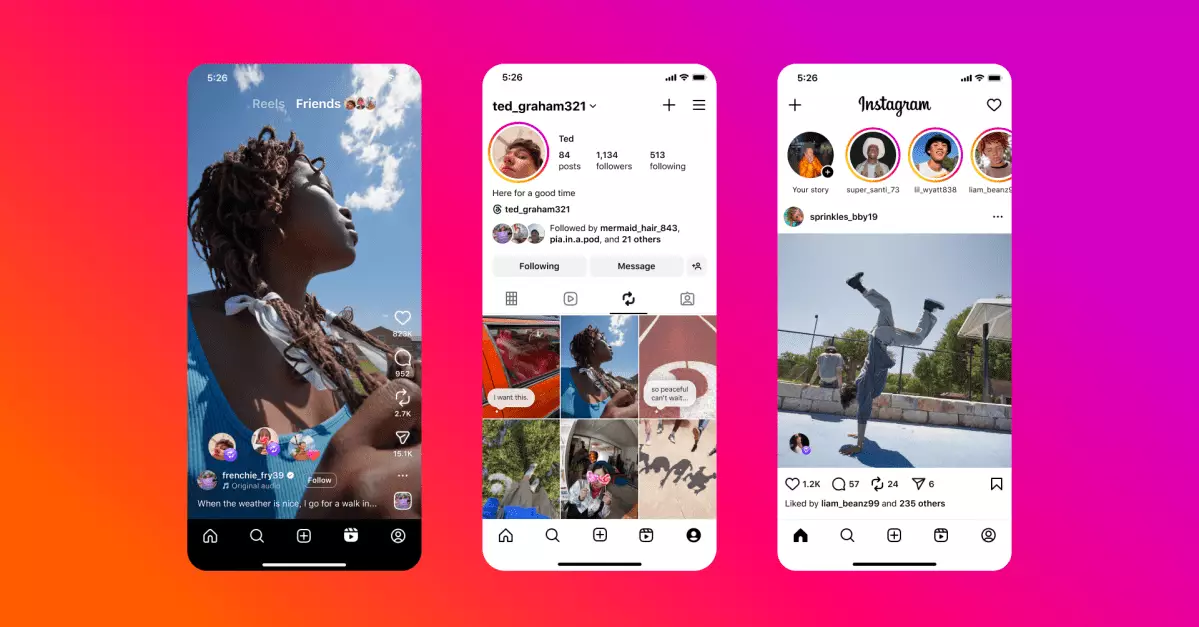Instagram’s latest move to incorporate a TikTok-inspired reposting feature signals a strategic attempt to stay relevant in a rapidly evolving social media landscape. By enabling users to share public Reels and posts directly to their profiles, the platform is embracing a more dynamic, content-centric approach that echoes TikTok’s viral mechanics. This shift profoundly alters how content circulates on Instagram, blurring lines between personal sharing and broader content discovery. However, such changes are not without risk; they threaten to dilute the platform’s core identity, which was once rooted in curated visual storytelling among friends and family. The move suggests Instagram is desperate to compete in a space where ephemeral, community-driven content outperforms traditional photo sharing, yet it also raises questions about authenticity and creator monetization. Will reposting truly invigorate the platform, or merely usher in another phase of content overcrowding and user fatigue?
From Personal Galleries to Public Stage: A Shifting Cultural Paradigm
Historically, Instagram was designed as a virtual scrapbook—an intimate space where users shared moments with close contacts. Over time, the platform has increasingly shifted focus toward public content, driven by the demands of creators and brands. The new reposting feature accelerates this transformation, making it easier for users to share popular content—regardless of its original context—thus democratizing viral culture. Yet, this also exacerbates ongoing issues: the erosion of personal narrative, the rise of superficial engagement metrics, and feelings of disconnection among longtime users. The platform’s attempt to replicate TikTok’s success underscores its recognition that short-form, shareable videos are now the dominant currency of social validation. But it also underscores a fundamental problem: Instagram’s core community may feel alienated as the culture shifts away from meaningful interactions to viral loops and content recyclability.
The Complicated Politics of Privacy and Control
Adding features like the location map, inspired by Snapchat’s Snap Map, reflects Instagram’s strategic attempt to foster a sense of immediacy and place. This new feature, which shows friends’ last active locations and posts from specific events, aims to create a more interactive and real-time experience. While it may seem engaging, it also invites scrutiny regarding privacy and user safety. In an era where digital boundaries are fragile, giving people the ability to see each other’s locations—even with opt-in controls—carries inherent risks. Additionally, the increased control over interaction visibility—such as hiding likes and reposts—reveals Instagram’s awareness of the negative sentiment surrounding user privacy. These tweaks represent an ongoing attempt to balance user engagement with the autonomy to manage personal data, yet it remains to be seen if users will fully embrace these features or see them as invasive.
The Platform’s Identity Crisis and Future Trajectory
What Instagram is experiencing now is more than just feature updates—it epitomizes a crisis of identity. Once lauded for being a curated paradise for personal expression, the platform now feels like a battleground for fleeting trends and aggressive feature proliferation. Reels, Reposts, Location Maps—each feature is a piece of a larger puzzle aimed at dethroning TikTok and reclaiming user attention. Nonetheless, this frantic scramble often feels reactive rather than visionary, risking the alienation of the loyal user base that cherished the platform’s original charm. For creators who built audiences on Instagram’s initial premise, these constant changes threaten to undermine their efforts, fostering frustration rather than growth. The platform’s challenge lies in reconciling its commercial ambitions with the foundational expectation of authentic, personal connection. Without clear direction and consideration for user feedback, Instagram risks becoming a patchwork of gimmicks rather than a cohesive digital space.
Will These Changes Save or Doom Instagram?
Ultimately, the most compelling question remains: Can these incremental updates breathe new life into a platform that is visibly drifting away from its roots? The introduction of reposting and location sharing indicates a willingness to innovate, but innovation alone does not guarantee relevance. Instagram’s problem isn’t a lack of features; it’s an overabundance of competing priorities that often seem disconnected from user desires. For some, the new reposting capabilities will enhance content sharing and community engagement, but for others, it will feel like another unnecessary addition to an already crowded interface. If Instagram genuinely seeks to evolve into a platform that fosters meaningful interactions and authentic storytelling, it must go beyond surface-level feature copying and focus on nurturing a sense of community that aligns with its original vision. Without this recalibration, the platform risks becoming a digital echo chamber, where the true value of social media—connection and creativity—is drowned out amid algorithms and viral trends.


Leave a Reply